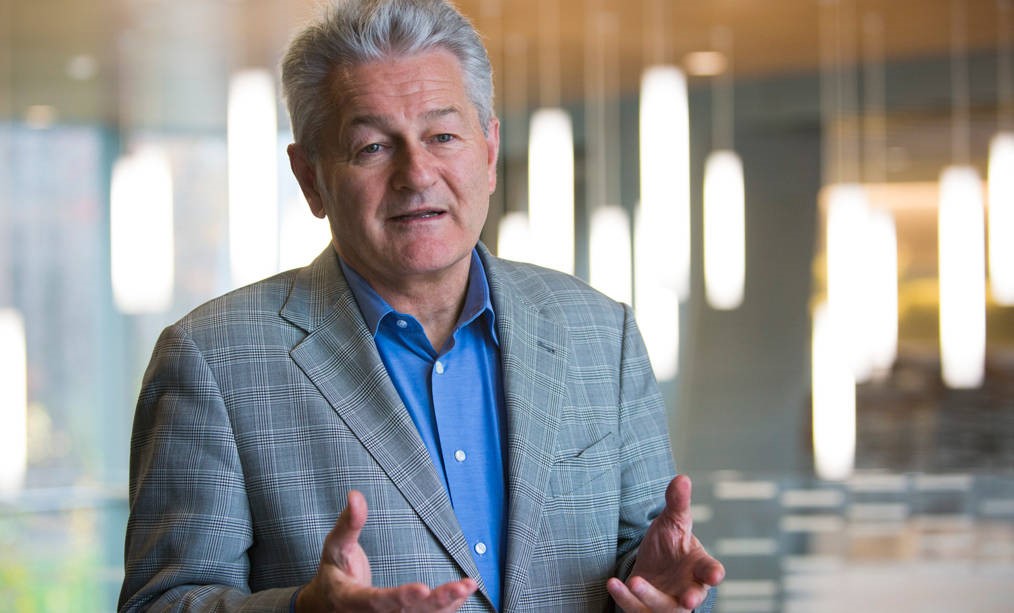Picture the slime you used to play with as a child — the gooey putty that adhered to the floor, table or even walls of your home, much to the chagrin of your parents. Now imagine that slime is actually a community of microbes – that’s what a biofilm is, and instead of sticking to the floor, these films stick to parts of our bodies and various surfaces and can cause infections.
Professor Reinhard Laubenbacher from the UConn School of Medicine Department of Cell Biology, Director of the Center for Quantitative Medicine and Professor at The Jackson Laboratory for Genomic Medicine, is leading an interdisciplinary team of researchers that has received more than $2.2 million from the National Institutes of Health, to study ways by which we may be able to control biofilms formed by a fungus that is an important cause of topical and systemic infections. The team includes Professor Anna Dongari-Bagtzoglou, chair of the Division of Periodontology in the UConn School of Dental Medicine and Professor Pedro Mendes, also in the Department of Cell Biology and the Center for Quantitative Medicine.
Candida albicans is a common dimorphic fungus that is responsible for 85 to 95 percent of all vaginal infections that result in doctor visits. Its biofilms can also form on the surface of implantable medical devices like pacemakers or IUDs and are a major cause of hospital-related infections like urinary tract infections, respiratory pneumonia and surgical site wound infections. This fungus is particularly dangerous for immunocompromised patients whose ability to fight infection is severely diminished due to factors such as being HIV-positive or being very young or very old.
Recent research in Dongari-Bagtzoglou’s laboratory has discovered that C. albicans biofilms often include different bacterial species that can affect fungal virulence either positively or negatively, depending on the composition and metabolic activity of the bacterial components. The project will take this knowledge and use it to develop a better understanding of C. albicans’ interactions with two species of bacteria commonly found in such biofilms, streptococci from the mitis group and Lactobacillus sp. The team will develop a predictive mathematical biofilm model that can be used to design optimal controls for fungal growth in heterogenous biofilms. The end goal of the project will be to use this model to determine the best way to control the assemblage of varying compositions of microbial species, affecting their metabolic activity and ability to form biofilms.
“The applicability of the results of this project extends far beyond biofilms into all areas of medicine and healthcare that are concerned with microbial communities, such as studies of the human microbiome and its relation to disease,” Laubenbacher says.
Laubenbacher received his Ph.D. in mathematics from Northwestern University in 1985. He joined the UConn staff in 2013. His current research interests include the development of mathematical algorithms and their application to problems in systems biology, in particular the development of multiscale models of disease processes. Of particular interest are applications to infectious diseases and cancer.
This project is NIH Grant Number R01 GM127909-01.



